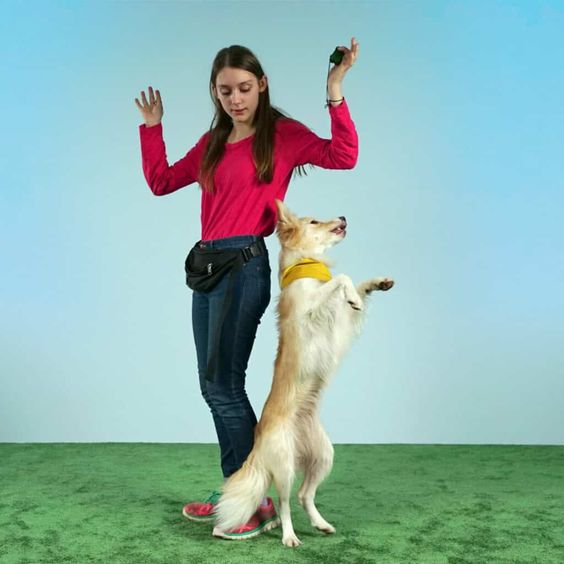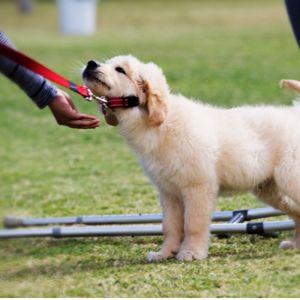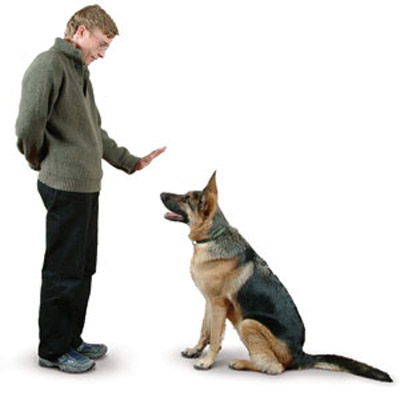Training a dog to be an artist may sound unconventional, but it can be an exciting and fulfilling experience for both you and your furry companion. Dogs are incredibly intelligent and capable of learning various skills, including artistic talents. Whether you want your dog to create pawprint artwork or learn tricks that mimic artistic expressions, this article will provide you with ten secrets to help you successfully train your dog to be an artist.

Positive Reinforcement
When it comes to training any dog, positive reinforcement is paramount. Reward-based training where you offer praise, treats, or toys for desired behaviors will motivate and encourage your dog during the artistic training process. Never use punishment or negative methods as they can undermine the dog’s trust and hinder their learning progress.
Start with Basic Obedience Training
Before diving into artistic training, ensure your dog is well-versed in basic obedience commands such as sit, stay, and lie down. These foundational skills will establish a strong communication bond between you and your furry friend, making further training more effective.
Engage Your Dog’s Sensory Perception
Artistic training for dogs involves stimulating their senses. Incorporate activities that motivate your dog’s senses, including sight, smell, touch, and hearing. This could be through exposure to various colors, textures, or sounds, which will enhance their artistic aptitude and artistic expression.
Teach Basic Artistic Skills

Begin by teaching fundamental artistic skills, such as holding a brush or pencil, which can be easily held in their mouths. Introduce these tools in a playful and positive manner, rewarding their efforts along the way. Gradually progress to more complex skills like pawprinting or creating specific shapes.
Shape Behaviors with Target Training
Target training involves using a specific object, such as a target stick or mat, to direct your dog’s behavior. This technique can be utilized to teach unique artistic maneuvers, like canvas painting or the creation of specific patterns. By shaping their behavior, you can guide your dog to produce art with precision.
Incorporate Clicker Training
Clicker training is an effective method to mark desired behaviors accurately. Pair the sound of a clicker with rewards to signal the exact moment your dog behaves artistically. With practice, your dog will associate the clicker sound with positive outcomes, streamlining their artistic learning process.
Encourage Creative Exploration
Allow your dog to explore their artistic abilities by offering various art mediums, such as non-toxic paints or clay. Provide a safe and supervised environment for them to experiment with different materials, encouraging their creativity to flourish.
Create Routine and Consistency
Establishing a consistent training routine with regular sessions will facilitate better learning retention and faster progress. A structured routine will help your dog become familiar with the training process, aiding in the development of their artistic talents.
Seek Professional Assistance

Consider seeking guidance from professional dog trainers or artists who specialize in training dogs in artistic endeavors. They can provide insights, specific techniques, and personalized tips to enhance your dog’s artistic abilities.
Enjoy the Journey
Remember, training your dog to be an artist is a journey that requires patience, dedication, and a positive mindset. Celebrate small victories and cherish the joy of witnessing your dog’s artistic growth. Enjoy the process alongside your faithful companion, creating an unbreakable bond through the shared love of art.
Conclusion
Training your dog to be an artist is an exciting and unique endeavor. By following these ten secrets, you can embark on an artistic journey with your furry friend, unlocking their creative potential and nurturing a bond beyond words. Remember, consistency, positive reinforcement, and a patient approach will be the keys to success. So, gather your art supplies, unleash your imagination, and have fun training your dog to be the next four-legged Picasso or Van Gogh!